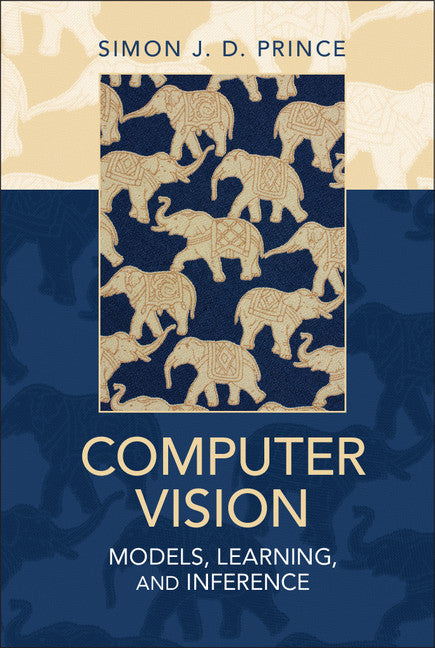Freshly Printed - allow 8 days lead
Couldn't load pickup availability
Computer Vision
Models, Learning, and Inference
A modern treatment focusing on learning and inference, with minimal prerequisites, real-world examples and implementable algorithms.
Simon J. D. Prince (Author)
9781107011793, Cambridge University Press
Hardback, published 18 June 2012
598 pages, 357 colour illus. 5 tables 201 exercises
26 x 18.4 x 2.8 cm, 1.4 kg
'The author's goal, as stated in the preface, is to provide a book that focuses on the models involved, and I think the book has succeeded in doing that. I learned quite a bit and would recommend this text highly to the motivated, mathematically mature reader.' Jeffrey Putnam, Computing Reviews
This modern treatment of computer vision focuses on learning and inference in probabilistic models as a unifying theme. It shows how to use training data to learn the relationships between the observed image data and the aspects of the world that we wish to estimate, such as the 3D structure or the object class, and how to exploit these relationships to make new inferences about the world from new image data. With minimal prerequisites, the book starts from the basics of probability and model fitting and works up to real examples that the reader can implement and modify to build useful vision systems. Primarily meant for advanced undergraduate and graduate students, the detailed methodological presentation will also be useful for practitioners of computer vision. • Covers cutting-edge techniques, including graph cuts, machine learning and multiple view geometry • A unified approach shows the common basis for solutions of important computer vision problems, such as camera calibration, face recognition and object tracking • More than 70 algorithms are described in sufficient detail to implement • More than 350 full-color illustrations amplify the text • The treatment is self-contained, including all of the background mathematics • Additional resources at www.computervisionmodels.com
Part I. Probability: 1. Introduction to probability
2. Common probability distributions
3. Fitting probability models
4. The normal distribution
Part II. Machine Learning for Machine Vision: 5. Learning and inference in vision
6. Modeling complex data densities
7. Regression models
8. Classification models
Part III. Connecting Local Models: 9. Graphical models
10. Models for chains and trees
11. Models for grids
Part IV. Preprocessing: 12. Image preprocessing and feature extraction
Part V. Models for Geometry: 13. The pinhole camera
14. Models for transformations
15. Multiple cameras
Part VI. Models for Vision: 16. Models for style and identity
17. Temporal models
18. Models for visual words
Part VII. Appendices: A. Optimization
B. Linear algebra
C. Algorithms.
Subject Areas: Computer vision [UYQV]


